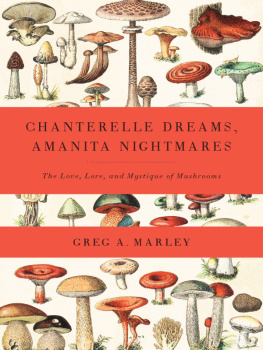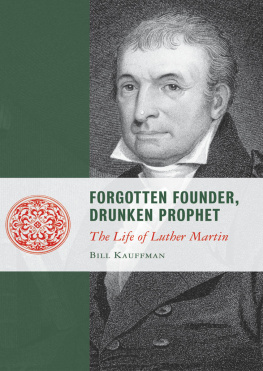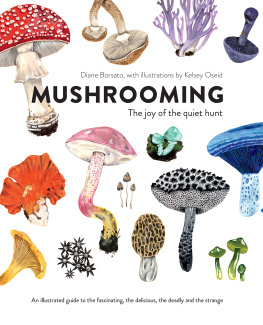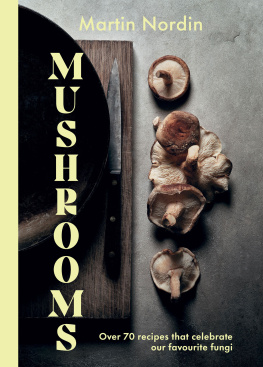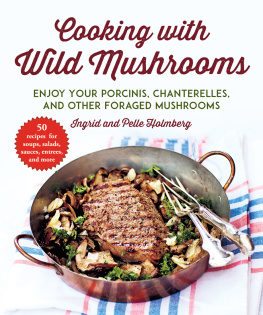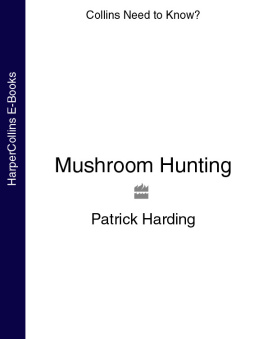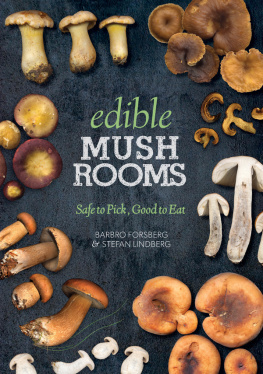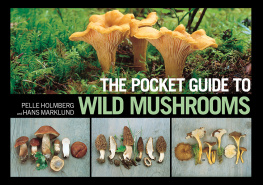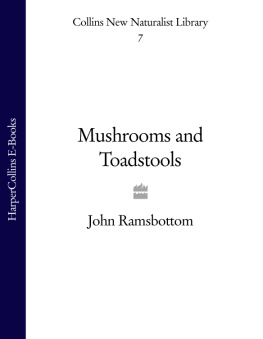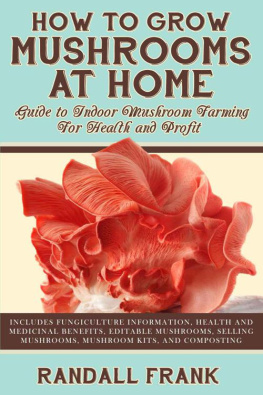CHANTERELLE DREAMS,
AMANITA NIGHTMARES

CHANTERELLE DREAMS,
AMANITA NIGHTMARES
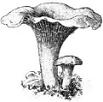
The Love, Lore, and Mystique of Mushrooms
GREG A. MARLEY
C HELSEA G REEN P UBLISHING
W HITE R IVER J UNCTION, V ERMONT
Copyright 2010 by Greg A. Marley
All rights reserved.
No part of this book may be transmitted or reproduced in any form by any means without permission in writing from the publisher.
Project Manager: Patricia Stone
Developmental Editor: Brianne Goodspeed
Copy Editor: Helen Walden
Proofreader: Ellen Brownstein
Designer: Peter Holm, Sterling Hill Productions
Printed in the United States of America
First printing August, 2010
10 9 8 7 6 5 4 3 2 1 10 11 12 13 14
Our Commitment to Green Publishing
Chelsea Green sees publishing as a tool for cultural change and ecological stewardship. We strive to align our book manufacturing practices with our editorial mission and to reduce the impact of our business enterprise in the environment. We print our books and catalogs on chlorine-free recycled paper, using vegetable-based inks whenever possible. This book may cost slightly more because we use recycled paper, and we hope youll agree that its worth it. Chelsea Green is a member of the Green Press Initiative (www.greenpressinitiative.org), a nonprofit coalition of publishers, manufacturers, and authors working to protect the worlds endangered forests and conserve natural resources.
Library of Congress Cataloging-in-Publication Data
Marley, Greg A., 1955
Chanterelle dreams, amanita nightmares : the love, lore, and mystique of mushrooms / Greg A. Marley.
p. cm.
Includes bibliographical references.
eBook ISBN: 978-1-60358-280-3
1. Mushrooms. 2. Mushrooms--Identification. 3. Cookery (Mushrooms) I. Title.
QK617.M397 2010
579.616--dc22
2010021496
Chelsea Green Publishing Company
Post Office Box 428
White River Junction, VT 05001
(802) 295-6300
www.chelseagreen.com
DEDICATION
This book is dedicated to the concept that we are all connected in our world. Just as mushrooms are intertwined in a web of relationships with plants, animals, and other fungi in the forest, my work has progressed within a web of connection and support. The keystone support in my life comes from my wife Valli and our son Dashiell. It is to them I dedicate my workfor helping me believe in myself, for helping create the time and space to focus, and for providing the most consistent (and valued) distraction from the lonely work of writing. Oh, and for making sure I dont get the big head.
CONTENTS
My goal in writing this book was to bring an appreciation for the pursuit of mushrooms and knowledge of them to a broader audience, including people for whom mushrooms remain a mysterious and suspect subject. The lore and stories of great mushrooms that constitute my vehicle are built upon the words and experiences of our mushroom-loving ancestors and living mushroomers around the world. My work rests upon the research and explorations of generations of naturalists and scientists and the knowledge base they have created. And, of course, I owe a debt of gratitude to the experiences, both good and bad, of the countless people who collect and eat wild mushrooms and have done so for many generations. How have people learned what can and should not be eaten, other than through trial and error?
On a more immediate basis, I am thankful for the mushrooming teachers in my life for sharing their information and passion for things fungal. The late Sam Ristich, the mushroom guru of Sligo Road, was ever generous with his knowledge and passion, and if I did not spend as much time as I wanted with him, I live with that loss. I am regularly grateful for the friendship and support of my friend Michaeline and her non-judgmental guidance and ready ear. I realize as I push the limits of the formal writing style of my biology education and my social work graduate education that I need to acknowledge David Arora and thank him for the refreshing combination of good science and irreverent whimsy with which he writes.
Finally, to the good folks at Chelsea Green, thanks. Thank you, Joni, for believing this material would become a dynamic book. I also appreciate the gentle and dogged determination with which Brianne worked to keep my language clean and my sentences in the active tense.
Introduction
TALES FROM THE FOREST FLOOR
Nature alone is antique and the oldest art a mushroom.
THOMAS CARLYLE
M ushroomsin their many colors, shapes, and sizes and with their complex life histories and growing habitatsare a fascination to everyone who possesses a love of nature. The deeper secrets and the tales of their lives offer an intriguing glimpse into a hidden world of complex relationships, powerful chemistry, mind-expanding potentials, and deep religious and magical associations. On a practical level, people are most interested in questions of edibility, toxicity, and health promotion, and in these areas, mushrooms touch our lives on a regular basis. When you expand the sphere of mushrooms to include all members of the kingdom Fungi, then their beneficial, neutral, or malignant influence touches us many times each day. As we eat our morning yeast-leavened bagel, lunch on blue cheese or Brie, take an antibiotic or antifungal for an infection, or unwind with a glass of wine or beer, fungi are an often unseen and underappreciated part of the picture. Fungi, and the mushrooms that represent a tiny but visible portion of this kingdom, are loved, worshipped, feared, and reviled, but most of all, they are ignored as they intersect our busy lives. Our relationship with the world of fungi is defined by a vast gulf of ignorance and lack of awareness. We dont see what lies before us, and we know little about what we do see.
Who knows, for example, that as we walk on the needles and leaves carpeting the forest floor, that with each step we tread upon many miles of fungal hyphae, the microscopically thin threads that comprise the vegetative body of mushrooms? Collectively these hyphal threads combine to form an unimaginably vast network of mycelium growing just beneath the surface of the ground and connecting to the roots of the majority of green plants. This network of interconnected fungal mycelium and plant roots carries nutrients, water, and chemical messages throughout the forest ecosystem. Paul Stamets, author of Mycelium Running, refers to this system as Earths natural Internet.
We know so little about fungi, and yet within our collective sphere of knowledge lies an ever-growing number of fascinating tales about mushrooms and their role in our lives and in our world. As I edge closer to my fortieth year of an ongoing love affair with the world of mushrooms, it is my intention to share a few of the many compelling stories I have learned. My goal is to help each reader take another step in transforming our culture from mycophobic (mushroom fearing) to mycophilic (mushroom loving). This can happen only when we gain a better understanding and appreciation of the mushrooms around us. The steps toward embracing mushrooms are built upon growing awareness of, and intimacy with, the lives of the fungi intertwined in our world.
The terms mycophilic and "mycophobic were coined in 1957 by an international banker and famed amateur mycologist, R. Gordon Wasson, to describe differences between ethnic groups with regard to their attitudes, beliefs, and use of wild mushrooms. Wasson first realized these differences in 1927, while he was on honeymoon in the Catskills with his new bride, Russian-born pediatrician Valentina Pavlovna. Many years later the well-known ethnomycologist would recall the initial experience that started him down the path from mycophobe to mycophile.
Next page
